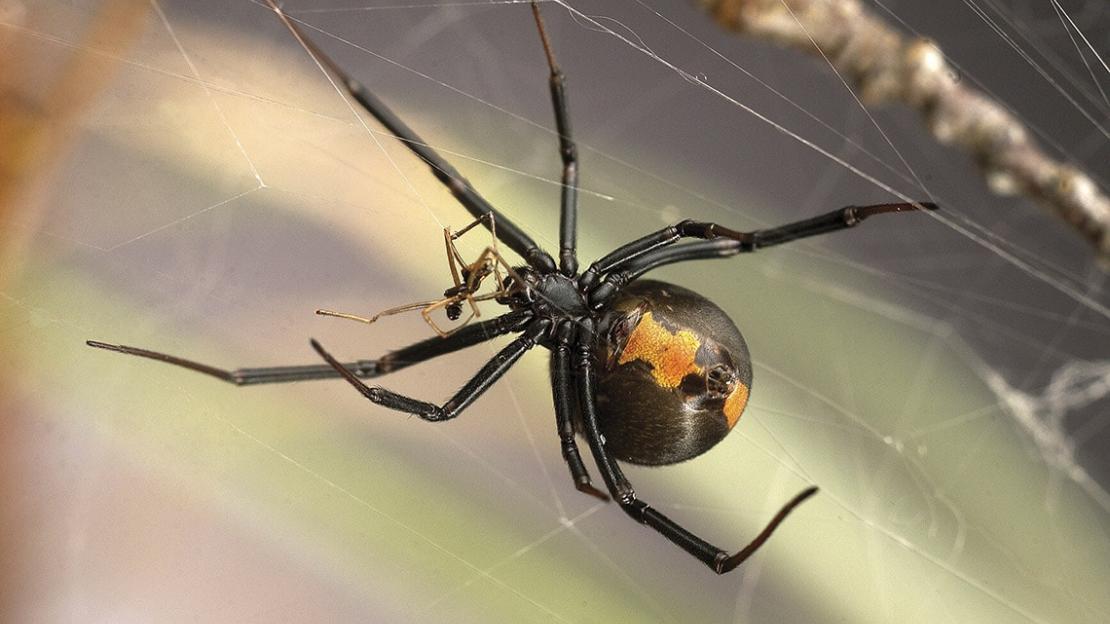Research by Maydianne Andrade, professor in the department of biological sciences, is helping explain why some male spiders benefit from elaborately killing themselves during sex.
An essay published in the Wall Street Journal (adapted from an upcoming book on females in the animal kingdom) notes how illogical it seems that some species require death to create life. But the Australian redback spider — one of many Andrade has researched — goes to great acrobatic lengths to become a meal. The spider does a headstand and flips over to stab its own abdomen on the fangs of a female spider. The female then vomits digestive fluids on him and begins eating his backside while he inseminates her for half an hour. The male drags his mutilated body away for a quick 10-minute break before returning for a fatal round two. The tryst ends when the female wraps his body in silk — to pick at when peckish.
Andrade, a Canada Research Chair in Integrative Behavioural Ecology, has proven that these suicidal spiders are giving themselves a leg up in the competitive mating world. Female spiders often mate with several males in a row, but eating a mate makes the sex last longer, giving the male extra time to fertilize more eggs. The female is also more likely to sit back and digest after the one-night stand, rather than look for another male. Only 20 per cent of male redback spiders ever mate, meaning they’ve adapted these habits to raise the odds that their one chance at sex ends in successful reproduction.
Andrade’s research into the Australian redback spiders dates back to 1996; the Andrade lab has since discovered that these spiders sometimes avoid cannibalism by mating with immature females that haven’t devoured a mate before. Research from 2017 found this tactic benefits both sexes, as immature females reproduce and mate at the same rates as their mature counterparts, still tending not to immediately seek new mates. Thus, the males get the same breeding advantages, and some manage to escape with their lives.
